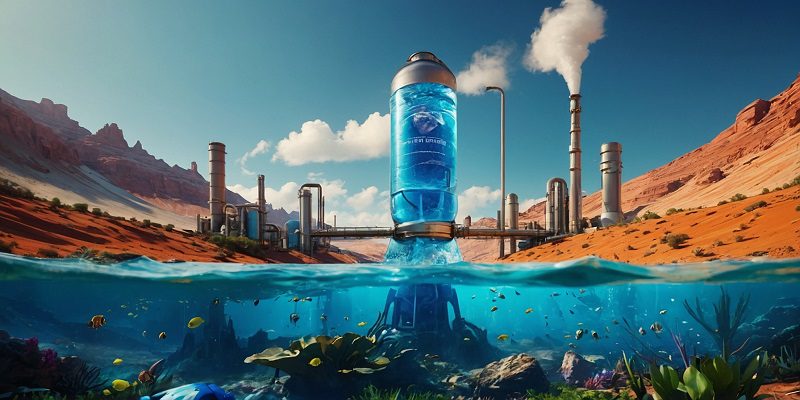Innovative Solutions for a Thirsty Planet: 10 Water Technologies That Will Change the World

Water is fundamental to life. Yet, it’s becoming increasingly scarce due to overpopulation, climate change, and pollution. Innovative water technologies are emerging to tackle this critical issue. These groundbreaking solutions promise to revolutionize how we manage, conserve, and utilize water resources. Here are ten water technologies that could change the world.
Advanced Desalination Techniques
Desalination, the process of converting seawater to freshwater, has been around for decades. However, traditional methods are energy-intensive and costly. Recent advancements aim to make desalination more efficient and sustainable. Innovations like solar-powered desalination plants and graphene-based filters are reducing energy consumption and operational costs. These technologies can provide fresh water to arid regions, potentially transforming lives and economies.
Atmospheric Water Generators (AWGs)
Imagine pulling water directly from the air. Atmospheric Water Generators (AWGs) do just that by condensing humidity into drinkable water. These devices are particularly useful in areas with limited freshwater resources but high humidity. Companies like Watergen and Skywell have developed portable AWGs that can produce several gallons of water per day, offering a lifeline to communities in need.
Wastewater Treatment and Recycling
Recycling wastewater is a sustainable way to address water scarcity. Modern wastewater treatment plants utilize advanced technologies such as membrane bioreactors and ultraviolet (UV) disinfection to treat sewage and industrial waste. This treated water can then be reused for agricultural, industrial, and even potable purposes. Cities like Singapore have successfully implemented wastewater recycling, significantly reducing their reliance on imported water.
Smart Irrigation Systems
Agriculture accounts for about 70% of global freshwater use. Smart irrigation systems are helping farmers use water more efficiently. These systems use sensors and IoT technology to monitor soil moisture, weather conditions, and crop needs. Based on this data, they optimize water delivery, reducing wastage and increasing crop yields. Precision agriculture, supported by smart irrigation, is a key strategy for ensuring food security in a water-constrained future.
Fog Harvesting
In certain regions, fog harvesting is an innovative method to collect water. Mesh nets are used to capture water droplets from fog, which then trickle down into collection containers. This low-tech solution is particularly effective in mountainous and coastal areas with frequent fog. For example, the Namib Desert in Africa uses fog nets to provide a reliable water source for local communities and wildlife.
Solar-Powered Water Purification
Solar-powered water purification systems offer an eco-friendly solution to provide clean drinking water. These systems use solar energy to power filtration units, making them ideal for remote and off-grid locations. Solar water disinfection (SODIS) involves exposing water-filled plastic bottles to sunlight, effectively killing pathogens. Other systems use solar energy to drive advanced filtration processes, ensuring safe drinking water for underserved populations.
Water-Saving Appliances
Household appliances have become smarter and more efficient. Water-saving technologies in dishwashers, washing machines, and toilets are helping reduce domestic water consumption. For instance, dual-flush toilets use different amounts of water for liquid and solid waste, while modern washing machines adjust water levels based on load size. These small changes, when adopted widely, can have a significant impact on overall water use.
Leak Detection Systems
Water loss through leaks is a major issue in urban water supply systems. Advanced leak detection technologies use sensors and data analytics to identify and locate leaks quickly. Smart water meters and acoustic sensors can detect even minor leaks, allowing for prompt repairs. Reducing water loss in this way not only conserves water but also saves money on water bills and infrastructure maintenance.
Artificial Intelligence (AI) in Water Management
Artificial Intelligence (AI) is revolutionizing water management. AI systems analyze vast amounts of data from weather forecasts, water usage patterns, and environmental conditions to optimize water distribution. These intelligent systems can predict water demand, detect anomalies, and suggest efficient allocation strategies. By integrating AI, water utilities can improve service delivery, reduce waste, and respond more effectively to emergencies.
Green Infrastructure
Green infrastructure involves the use of natural processes to manage water. Techniques such as rain gardens, green roofs, and permeable pavements help capture and filter rainwater, reducing runoff and improving water quality. Urban areas can benefit greatly from these solutions, which not only manage stormwater but also enhance biodiversity and aesthetic appeal. Green infrastructure represents a sustainable approach to urban water management, blending technology with nature.
Conclusion
As the global water crisis intensifies, innovative technologies offer hope. From advanced desalination and atmospheric water generation to smart irrigation and AI-driven water management, these solutions can address various aspects of water scarcity. By adopting and scaling these technologies, we can ensure a sustainable water future for generations to come. Embracing innovation is crucial in our quest to quench a thirsty planet.




